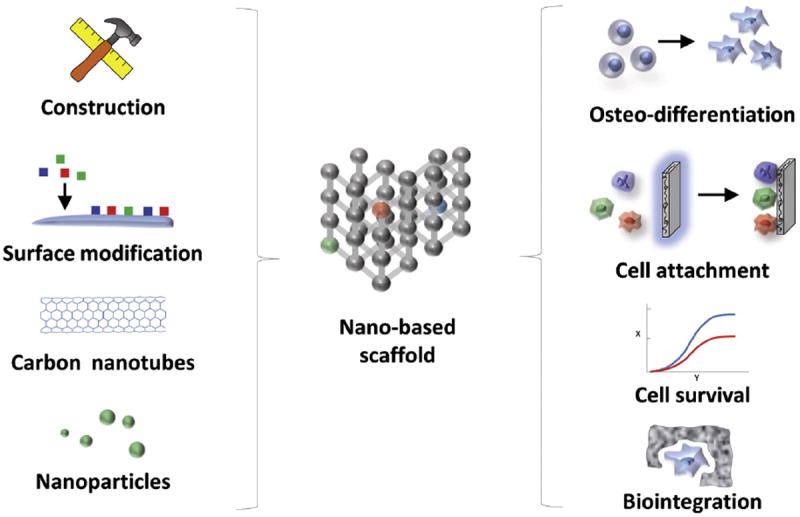Figure 3.

Nano-based scaffold construction and modification. The material used for construction of a scaffold impacts many aspects of bone tissue engineering including cell survival, attachment, differentiation, and integration. Following construction, modification of scaffold surface topography to improve the physicochemical interaction between implanted materials and the native in vivo environment allows for enhancement of mechanical stability, biocompatibility, and cellular survival of implanted constructs. For example, metallic nanoparticles have also been incorporated into scaffolds to increase mechanical strength, cellular adhesion, and bone forming capacity.
